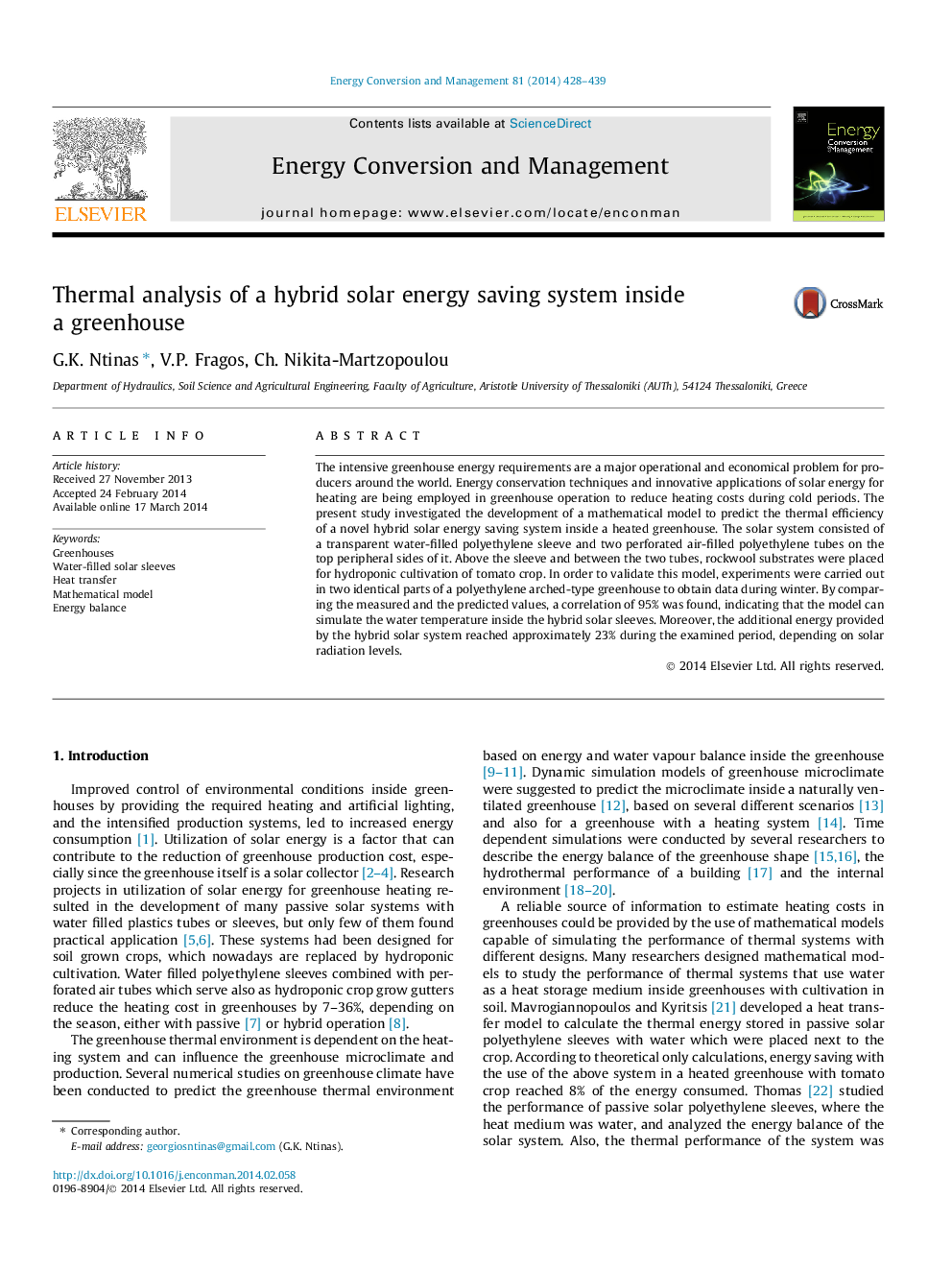| Article ID | Journal | Published Year | Pages | File Type |
|---|---|---|---|---|
| 763969 | Energy Conversion and Management | 2014 | 12 Pages |
•A hybrid solar system consisted of water filled polyethylene sleeves was examined.•The thermal behaviour of the system was studied based on the sleeves energy balance.•Water temperature and heat exchanges of the sleeves were dynamically estimated.•Experimental data used to validate the predictions of the mathematical model.•The use of the system led to an energy saving of 23% inside a heated greenhouse.
The intensive greenhouse energy requirements are a major operational and economical problem for producers around the world. Energy conservation techniques and innovative applications of solar energy for heating are being employed in greenhouse operation to reduce heating costs during cold periods. The present study investigated the development of a mathematical model to predict the thermal efficiency of a novel hybrid solar energy saving system inside a heated greenhouse. The solar system consisted of a transparent water-filled polyethylene sleeve and two perforated air-filled polyethylene tubes on the top peripheral sides of it. Above the sleeve and between the two tubes, rockwool substrates were placed for hydroponic cultivation of tomato crop. In order to validate this model, experiments were carried out in two identical parts of a polyethylene arched-type greenhouse to obtain data during winter. By comparing the measured and the predicted values, a correlation of 95% was found, indicating that the model can simulate the water temperature inside the hybrid solar sleeves. Moreover, the additional energy provided by the hybrid solar system reached approximately 23% during the examined period, depending on solar radiation levels.
